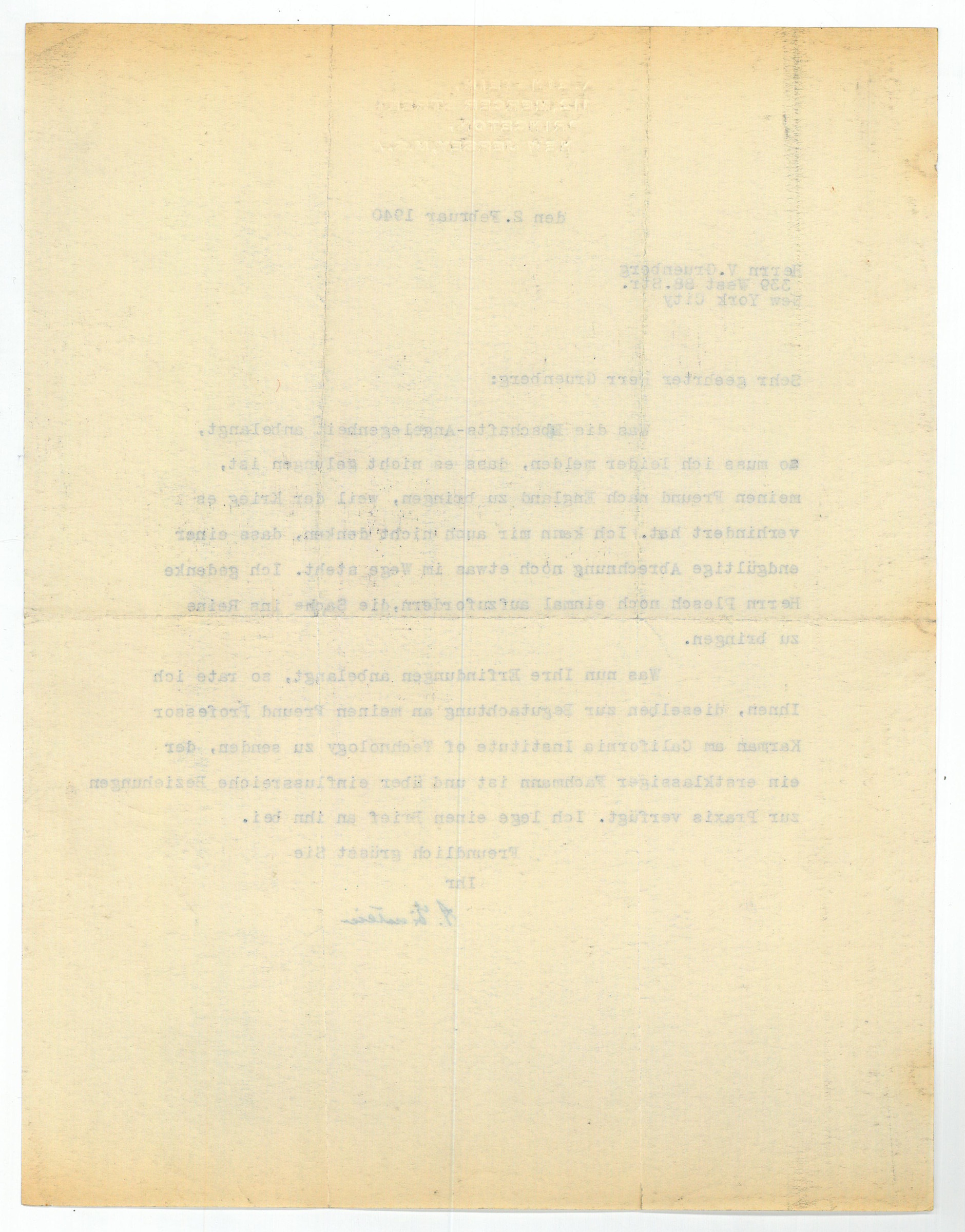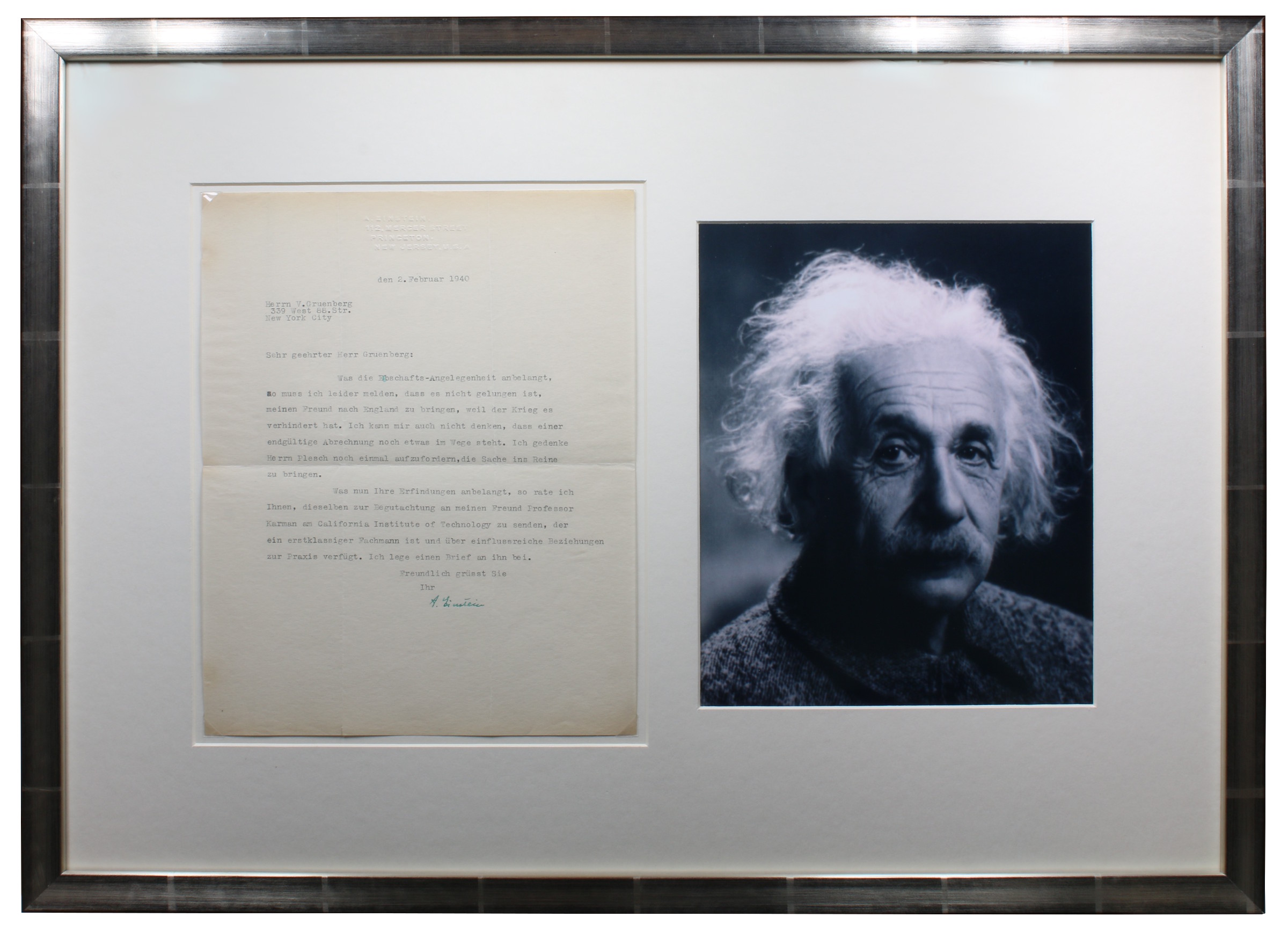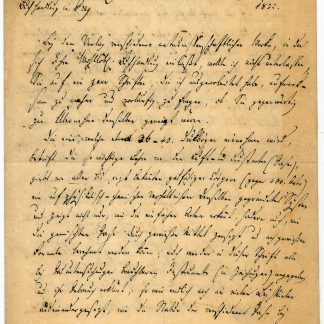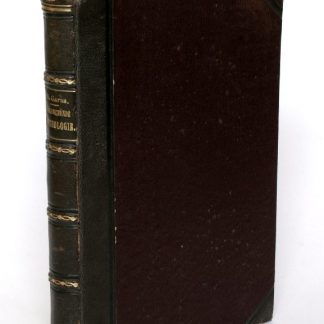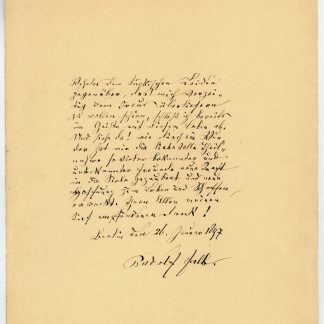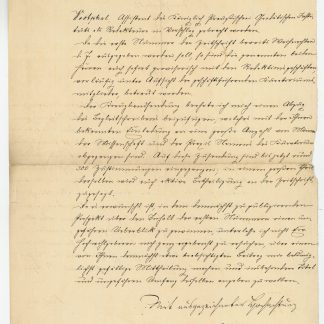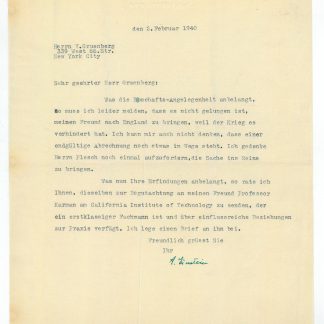Typed letter signed ("A. Einstein").
4to. 1 p. Signature and one handwritten correction in green ink. In German. Framed, matted and glazed (46 x 62 cm) with a photographic portrait.
€ 8,000.00
To the Russian-French hydrodynamic engineer Wsevolode Grünberg in New York City, concerning a contested inheritance matter in which Einstein had reluctantly agreed to assist. From 1939, Einstein acted as a go-between for Grünberg and his friend János Plesch, an important Hungarian physician who had emigrated to England. "Concerning the inheritance matter", Einstein writes, "I regret having to report that we were not successful in getting my friend to England, as the War prevented it. Nor can I imagine that any hindrance remains to proceeding with the final settlement. I intend once more to encourage Mr. Plesch to put everything in order. As regards your inventions, I suggest that you send them for evaluation to my friend Professor Karman at the California Institute of Technology, who is a first-class expert and has influential connections to the realm of construction and practical implementation in the field. I enclose a letter to him [...]" (transl.).
Wsevolode Grünberg was the nephew of the Russian orthodontist and collector Josef Grünberg, a close friend of both Albert Einstein, who gave him the nickname "Bolshie", and János Plesch during their time in Berlin. It appears that Einstein and his second wife Elsa had become acquainted with Wsevolode Grünberg shortly before their friend's death in 1932. Travelling to America in 1939, Grünberg approached Einstein for an introduction to fellow engineers in the U.S. and help with his inheritance issue back in Europe. The two men met in June 1939 at the home of Irving Lehman in Port Chester, New York, and Einstein subsequently did what he could for Grünberg. In the early 1940s, Grünberg's important hydrofoil designs were used by the National Advisory Committee for Aeronautics (NACA) to build a seaplane model that was successfully tested at Langley, VA. Ironically, the classification of the project prevented the French citizen Grünberg from seeing the results of the tests until years after the war. Grünberg later became a U.S. citizen, changing his name to Waldemar A. Craig.
Traces of folds. On Einstein's embossed Princeton stationery.


